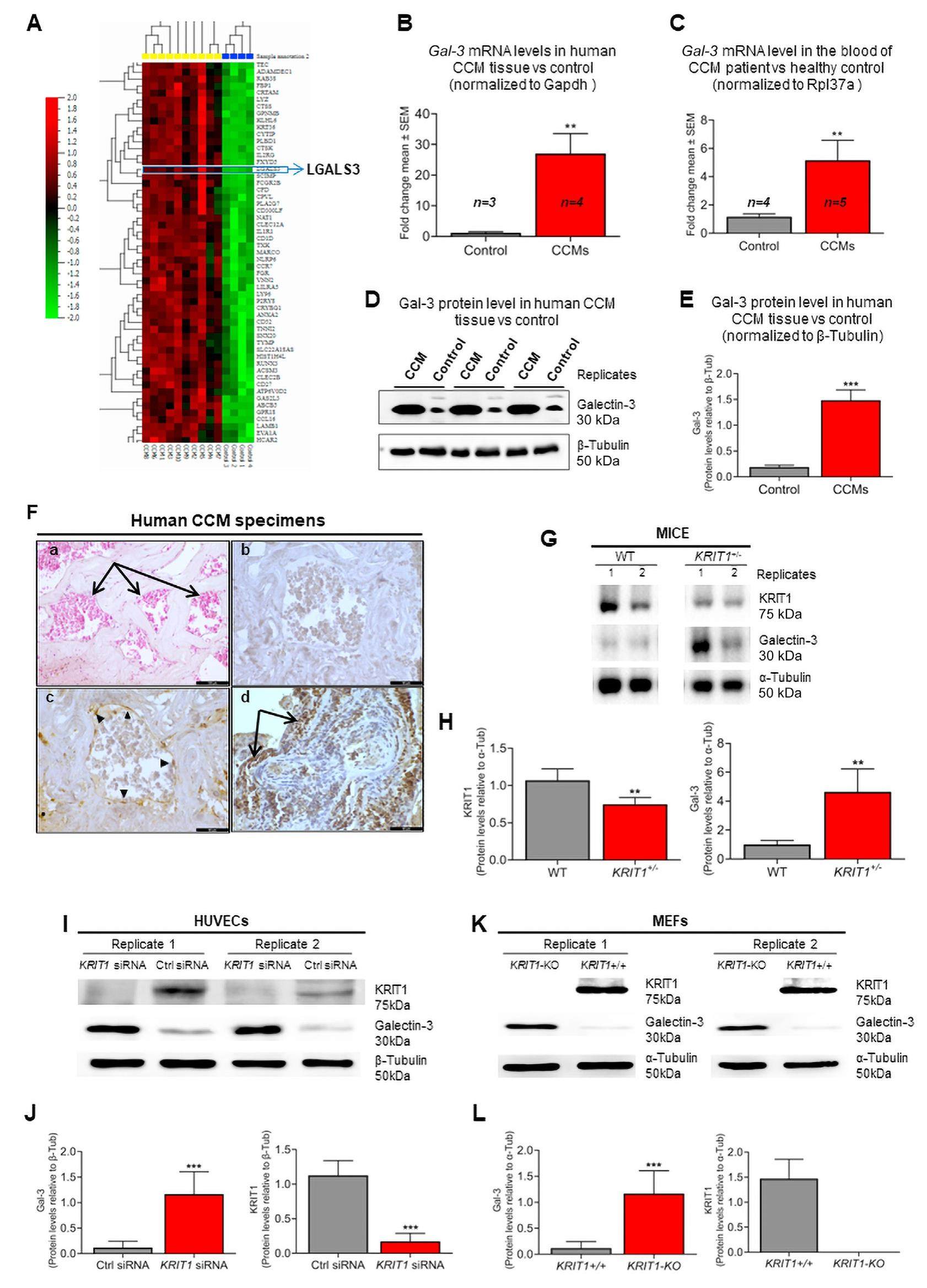
Identification of galectin-3 as a novel potential prognostic/predictive biomarker and therapeutic target for cerebral cavernous malformation disease


Cerebral cavernous malformation (CCM) is a major cerebrovascular disease of genetic origin characterized by abnormally dilated capillaries and a wide spectrum of symptoms, including headaches, seizures, neurological deficits, and intracerebral hemorrhage. Its unpredictable clinical course and the current lack of therapies make the identification of prognostic and predictive biomarkers an imperative research challenge. Herein, we provide evidence that galectin-3 (Gal-3), a major tissue and circulating biomarker of oxidative stress and inflammation, is significantly up-regulated both in CCM patients and experimental models. Specifically, whole transcriptome sequencing, qRT-PCR, and Western blotting studies demonstrated a significant up-regulation of Gal-3 expression levels both in surgical CCM specimens and in blood samples of CCM patients. Moreover, immunohistochemical analyses showed strong Gal-3 immunoreactivity in CCM lesion endothelial cells and infiltrating leukocytes. Furthermore, using cellular and animal models, we found that Gal-3 expression levels are inversely correlated with those of KRIT1, the major causative gene for CCM disease, implying a functional relationship. Overall, our findings demonstrate for the first time that Gal-3 up-regulation occurs in CCM disease and is linked to a causative gene, suggesting that it may serve as a useful biomarker of prognostic and predictive value for risk stratification and treatment of CCM patients.
